
Greetings Friends,
This newsletter includes; Farewell to Shorebirds, Lee Point development update, Darwin woodland, plants and wildlife.
1.0 Farewell to Shorebirds – Saturday 11 March
Lots of people joined the Farewell to Shorebirds event organised by Birdlife TopEnd, Plan and Friends of Lee Point (FLP).

Some of the people that went on the early morning bird walk to see the shorebirds at Lee Point.
Gavin O’Brien from Birdlife TopEnd spoke about an endangered Bar-tailed Godwit that was tagged in China (as B9) and returned to Darwin Sept-Oct each year from 2012-17. It was regularly seen at Lee Point.
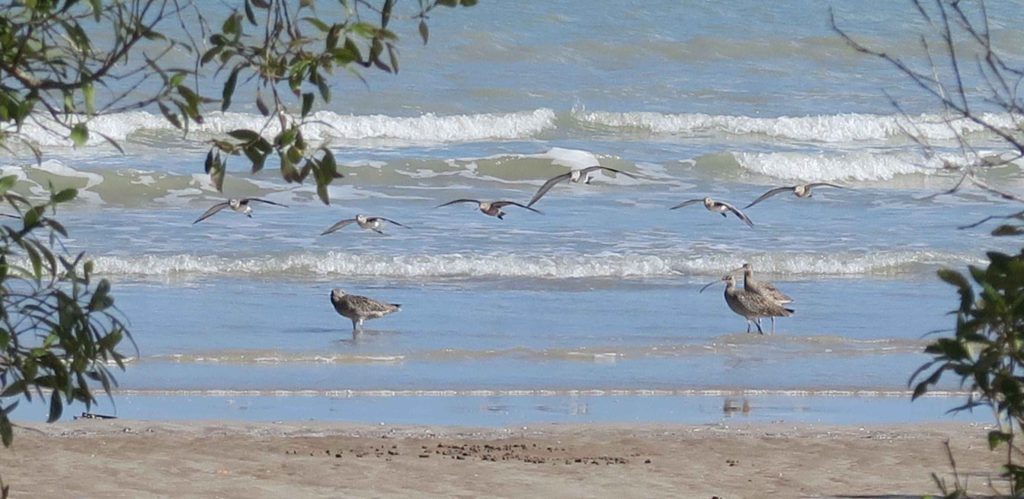
Eastern Curlews and Godwits (flying) at Lee Point – photo mid March 2023.
By now, these migratory shorebirds have probably left for places like Siberia (ãpprox 10,000 km away). Migratory shorebirds are under threat, ABC footage from Lee Point explains why and Living with Shorebirds at Lee Point has additional information.
2.0 Darwin woodland and DHA Lee Point development
Having woodland in Darwin makes life better for people and wildlife. Darwin’s land use plan will mean that most of the large woodland trees in the Darwin area (outside of Charles Darwin National Park) will be lost above the 14 m contour. Typically housing and woodland occurs 14m above mean sea level (14m contour).

The black dots represent the size and location of the main woodland areas in 2040.
Charles Darwin National Park is becoming increasingly isolated for land animals. At the current rate of clearing by 2040 the only woodland corridor from and to Darwin will be north of Darwin. This corridor runs from Lee Point – Holmes Jungle – Knuckeys Lagoon – Shoal Bay Coastal Reserve, a distance of approx 30 km. The planned DHA development at Lee Point will remove the majority of large woodland trees from Lee Point and approx half the large woodland trees from this corridor (Lee Point to Knuckey Lagoon section) will be lost severely impacting on: Lee Point: a special part of Darwin

Large woodland trees are typically > 100 years old. For more information on where they are in Darwin/Palmerston area, refer Darwin’s large woodland trees – a preliminary study.
DHA Lee Point development
The Australian Government is still assessing the Lee Point area for Gouldian Finch habitat.
The community should have a choice about what happens to Lee Point. Most people prior to 2020 were unaware of the DHA development or aware that the 2015 Notice of Intent (see Sec 2.2.2) has buildings up to 12 storeys high proposed for Lee Point.
Please sign this NEW PETITION to help relocate the DHA development to a suitable area.
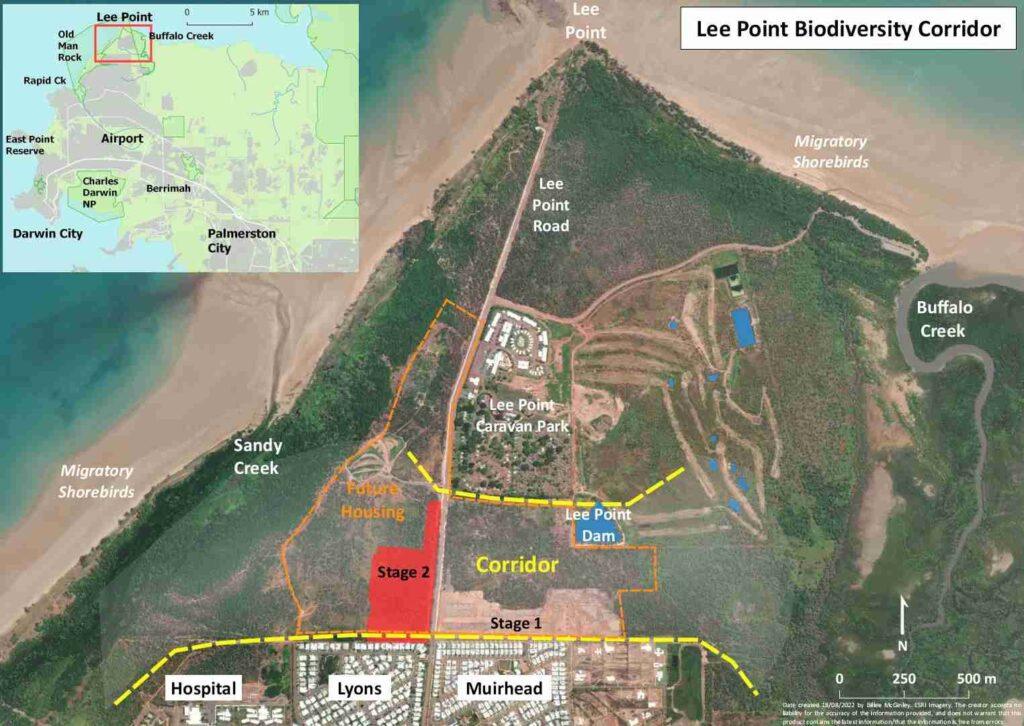
Map showing DHA Stage 2.
3.0 Images for 2022
Images of 2022 is our “2022 annual report” in pictures, also see Images of 2021.
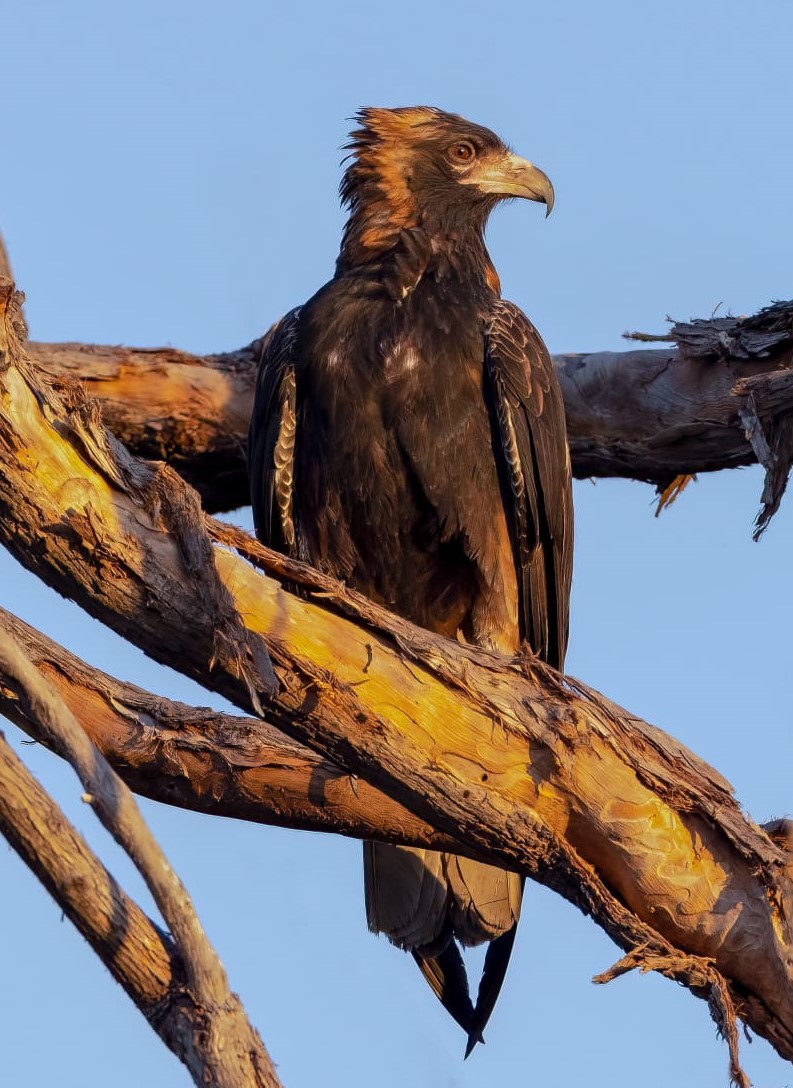
Black-breasted Buzzard south of Lee Point Dam – photo Tobias Aakesson.
4.0 Lee Point Quiz
Match these living organisms to when they first appeared on earth – time is stated in millions of years (Mya):
Q1. Plant kingdom – eucalypt trees (gum trees), acacias (wattles), cycads, grasses
A. 25Mya B. 50Mya C. 55Mya D. 280Mya
Q2. Fungi kingdom – earliest fungi
A. 50Mya B 100Mya C 200Mya D 500Mya
Q3. Animal kingdom – Finches, dragonfly, modern human, dinosaur
A. 0.3Mya B 15Mya C 240Mya D 300Mya
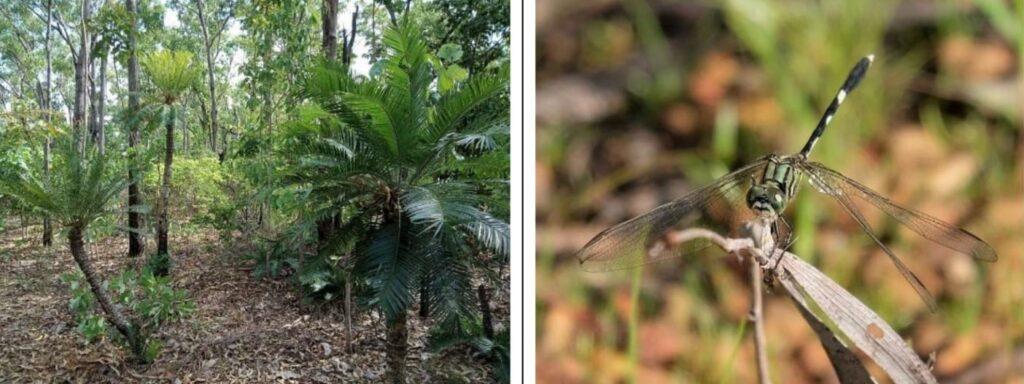
Cycads and dragonflys at Lee Point.
5.0 Plants and wildlife
Photos taken at Lee Point in March 2023.
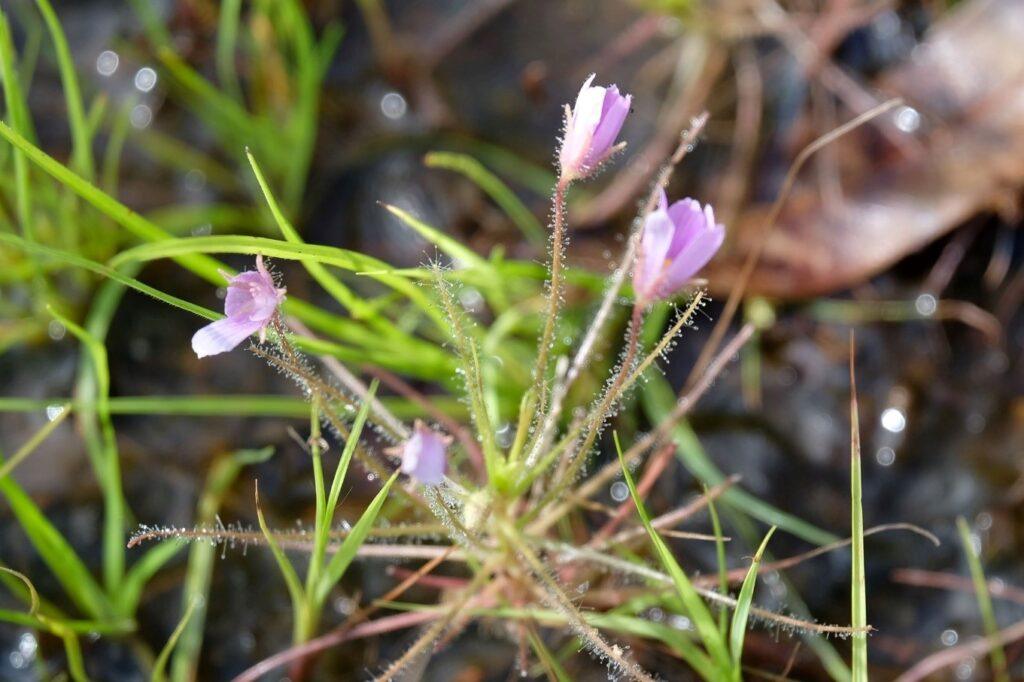
Sundew (Drosera spp.) – a carnivorous plant.
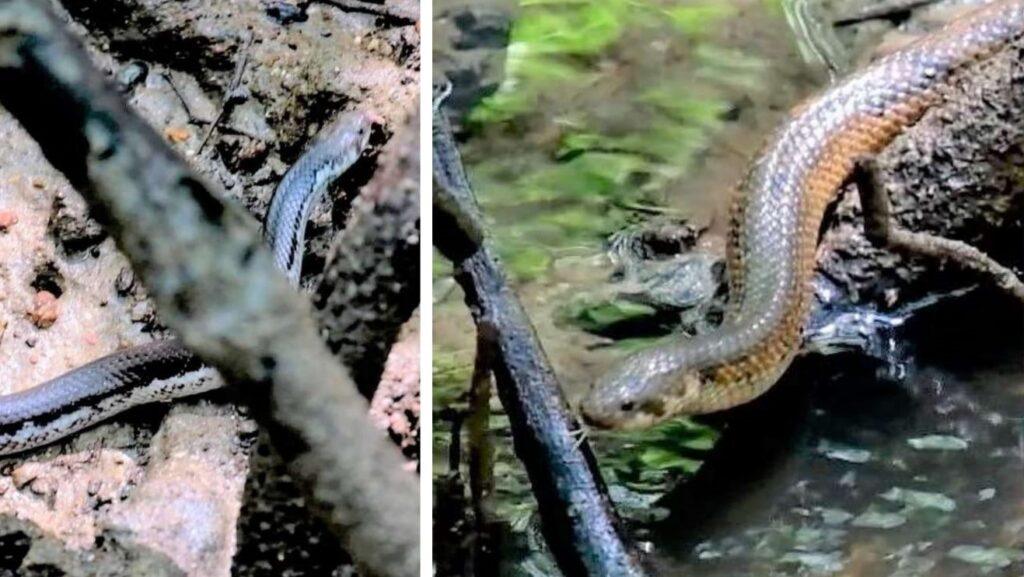
White-bellied Mangrove Snake (Fordonia leucobalia).
These aquatic snakes eat small prey, mainly crabs, and come in many different colours. They are weakly venomous and not considered dangerous to humans. These two had just mated in the mangroves.
Enjoy the wet season at Lee Point